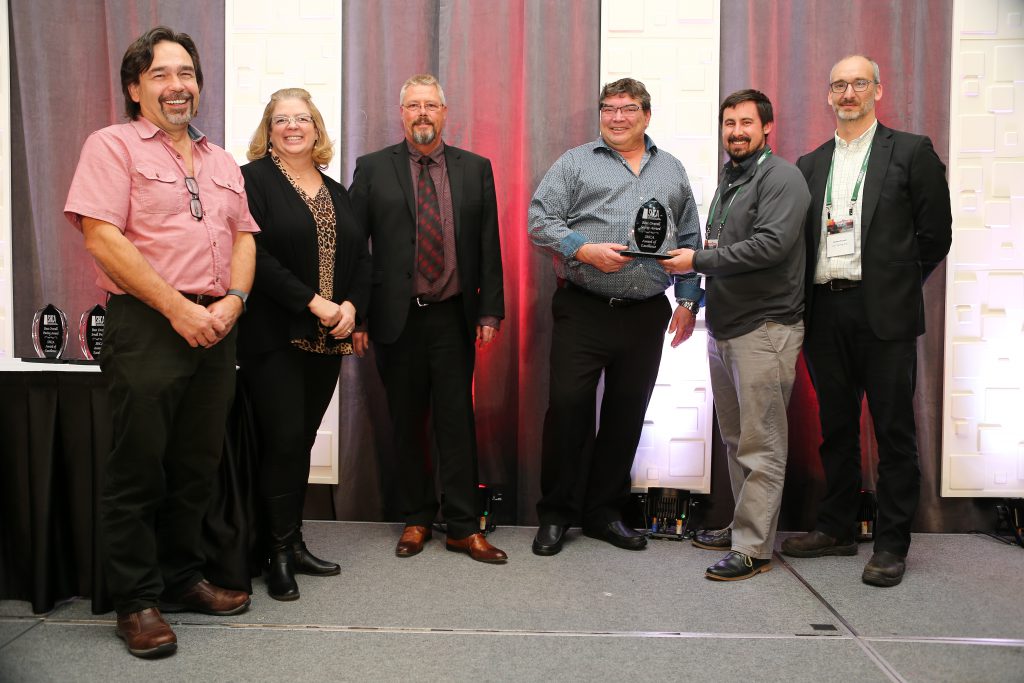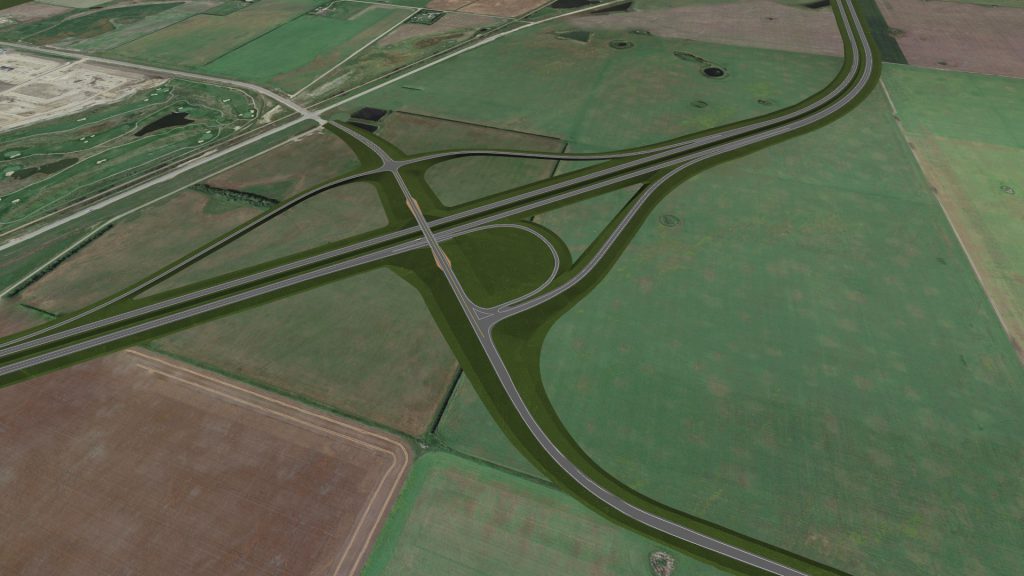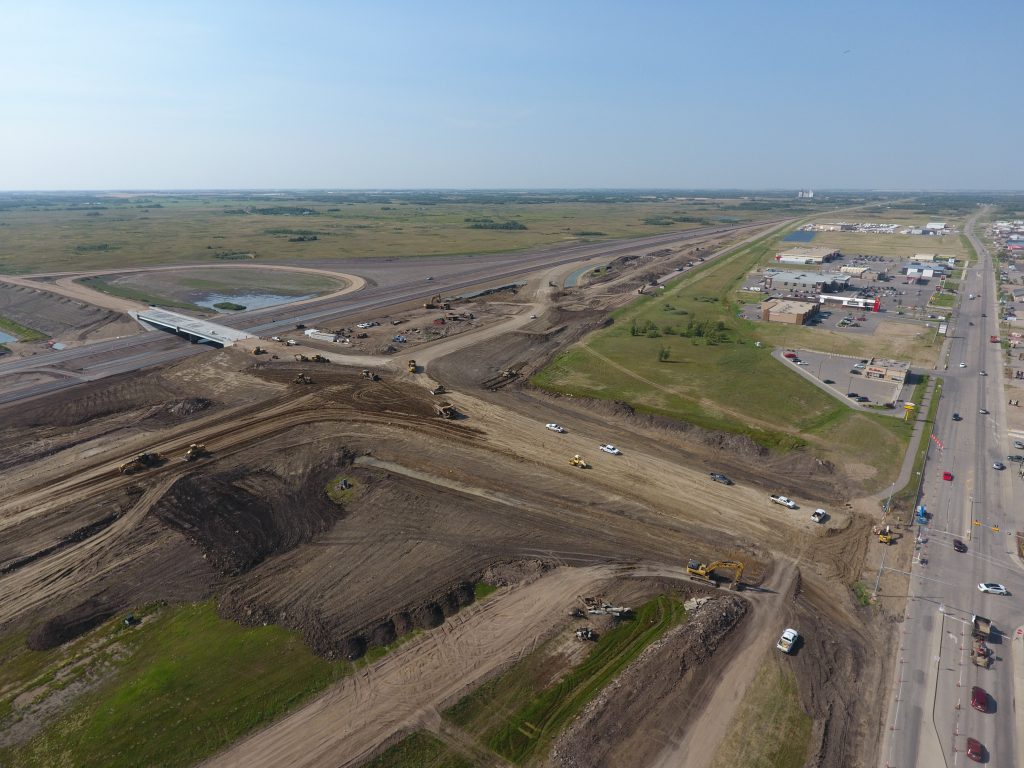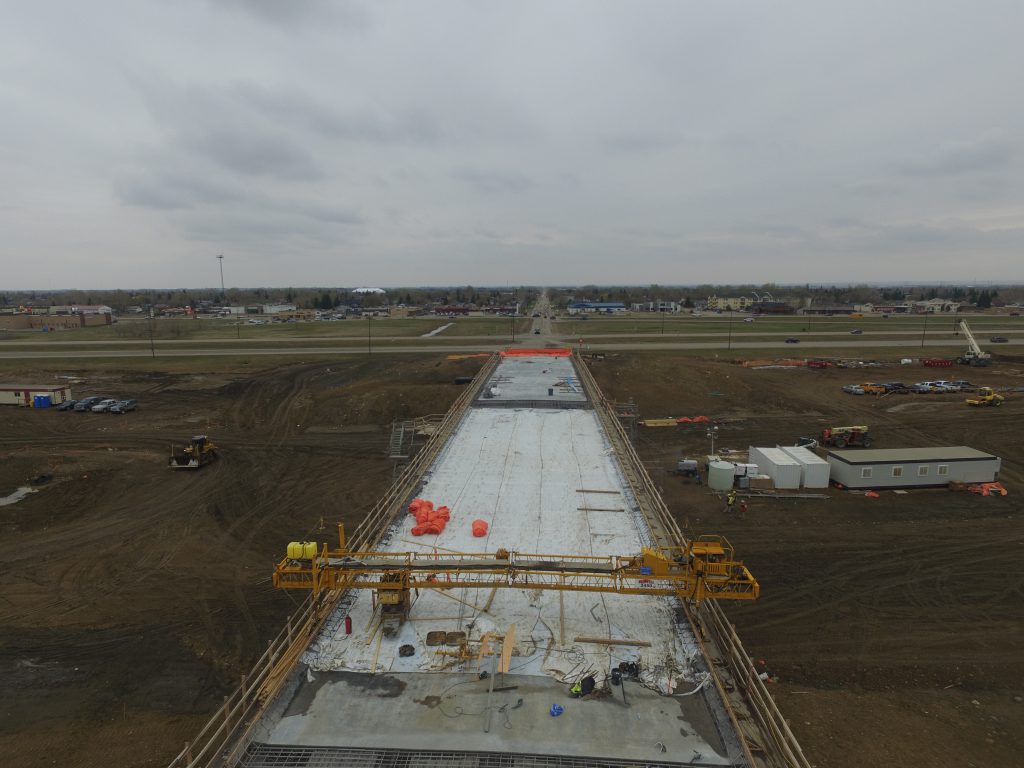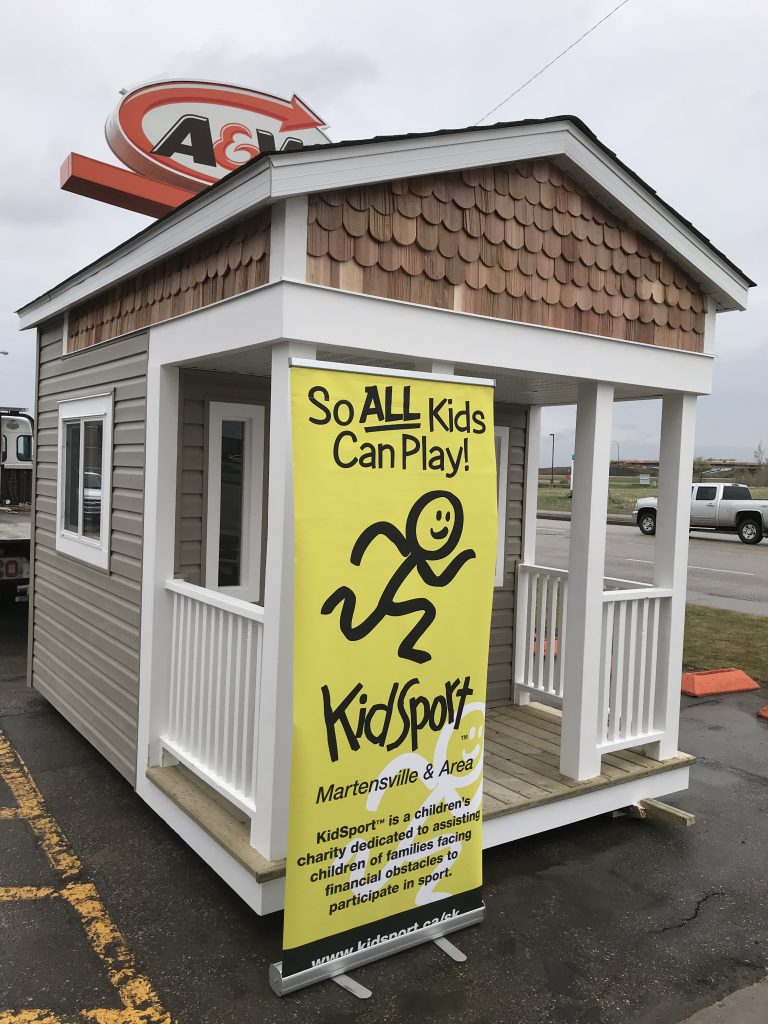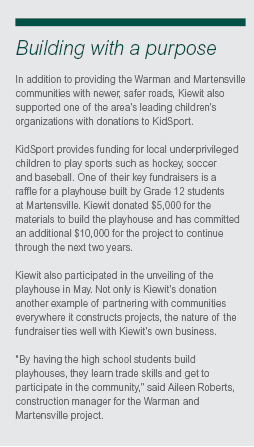Just outside Saskatchewan’s largest city of Saskatoon lie the communities of Warman and Martensville, two of the fastest growing cities in Canada.
In only 10 years, these cities have more than doubled in size, according to the Canadian census. With that increased population came more traffic and an opportunity for Kiewit and the local communities.
Peter Kiewit Sons ULC, working with the Ministry of Highways and Infrastructure in Saskatchewan, built new interchanges to serve both cities, along Highways 11 (in Warman) and 12 (in Martensville). And Kiewit Infrastructure Engineers (KIE) was also the engineer of record (EOR) for the $60.6 million project, the first time KIE has held this distinction.
Growth drives safety concerns
Saskatoon itself has grown to more than 246,000 (a jump of nearly 22 percent between 2006 and 2016), and that has turned Warman and Martensville from rural farming towns into suburbs for people working in Saskatoon. Both were incorporated as cities in just the past 10 years.
Highway 11 between Warman and Saskatoon has more than 17,000 vehicles per day, while Highway 12 between Martensville and Saskatoon has more than 14,000 vehicles per day. And as those highways approach the edge of their cities, the increased traffic led to left turns onto and across the highways, becoming more dangerous — resulting in vehicle accidents and a number of fatalities.
The Warman and Martensville Interchanges Project won awards for Safety and Best Overall Large Project from the Saskatchewan Heavy Construction Association (SHCA). Members of the Kiewit-led team accepted the awards at the SHCA convention in November.
Kiewit constructed two new interchanges. The Warman interchange routed the intersection of Highways 11 and 305 to the west and added an overpass, on-ramps and off-ramps for easier traverse. The Martensville interchange dispersed traffic onto Main Street, which runs perpendicular to Highway 12, and Centennial Drive, which runs parallel to it. In addition, a new overpass allows travelers on Main Street to cross over or enter Highway 12 without having to cross traffic from either side.
“Traffic safety will also be improved for motorists driving through the area or commuting to Saskatoon,” said Penny Popp, assistant deputy minister of design and construction for the Ministry of Highways and Infrastructure. “Beyond the local area, these overpasses provide additional benefits such as improving the efficiency of moving goods on our provincial highway network. Highway 11, in particular, is part of the national highway system and serves as the gateway to northern Saskatchewan.”
A team effort
Kiewit has done a number of construction projects in the province before, but two elements make this project unique: 1) It was the first large scale infrastructure design-build project for the Ministry; and 2) KIE served as EOR for an infrastructure project for the first time.
Those two factors are related. The Ministry took the step of requiring bidders to submit a technical proposal first, which was evaluated independent of cost, before submitting the full bid that included financials. This allowed Kiewit’s experience in design-build projects to shine through. Popp said a design-build approach would give the Ministry greater scheduling and cost certainty.
KIE was part of the project team from the outset. Taking on the EOR role meant that Kiewit engineers would put their professional seals on all public renderings and take on a client-facing role in the execution of the project. In addition, the high-profile role helped reinforce the company’s commitment to construction-driven engineering.
“Being a partner with the construction team, we’re all about making it efficient to build,” said Jim Bauman, senior design sponsor for KIE. “As a designer, we’ve got several choices to design anything that’s required. Those choices should be answered by the construction team, and we’ll determine what meets code and standards.”
Managing the curve
While both the construction and engineering aspects are handled by Kiewit, the fact that KIE is in a new role created a learning curve — but also a significant opportunity.
“We’re all Kiewit so if there are challenges, you know exactly where to go and how to quickly mitigate them,”
said Andrew Schumacher, project manager. “You have more control of your own destiny when there is better overall integration between construction and design. There are challenges, too, because we learned lessons on the fly with KIE. But, if we can improve on our design systems and processes on small-to-medium-sized infrastructure jobs, with KIE as EOR, they can build the capacity to take on an EOR role on larger projects.”
Day 4 of the 30-day closure to replace an existing at-grade highway crossing, connecting the highway to the west and the city of Martensville to the east.
Kiewit Project Manager Andrew Schumacher spoke to the community and elected officials in October as they marked the opening of the Warman and Martensville interchanges a year ahead of schedule. "We wanted to complete it in 2018, and we wanted to complete it without any injuries," he said. "The opening of these interchanges is about the safety of the traveling public, but it’s also about the safety of our workforce."
Photo looking east toward the city of Martensville shows the final deck pour on the Martensville Bridge.
In addition, the Warman and Martensville interchanges have been constructed using subcontractors from the local Saskatchewan community, a factor Schumacher cites as being instrumental to Kiewit winning the bid, but one that required flexibility on Kiewit’s part to manage a team comprised entirely of contractors with no Kiewit craft workers.
“If you can produce good results, it makes a difference,” Schumacher said. “We’ve been relentless in our principles: safety, quality and schedule management.”
Popp cites the Martensville overpass as an example of Kiewit’s innovation and execution. The plan allowed Kiewit to close the busy Main Street intersection with Highway 12 for 30 days, temporarily inconveniencing residents but completing the new bridge crossing ahead of schedule.
“This eliminated long periods of detours and allowed construction crews to complete the tie-in work safely and more efficiently,” Popp said. “The design-build allows for this type of schedule change.”
